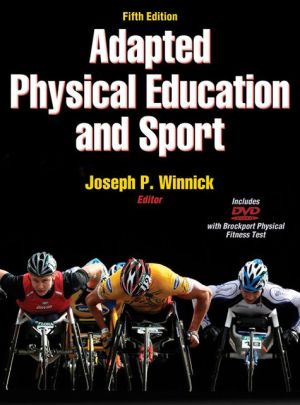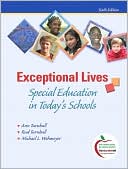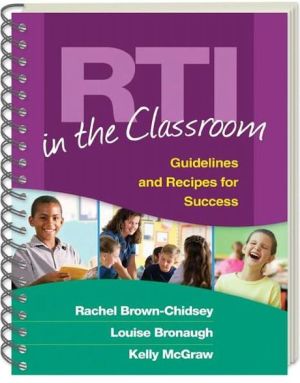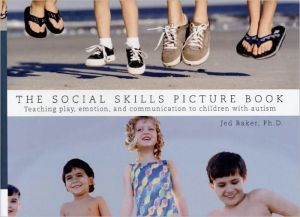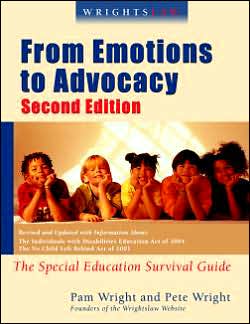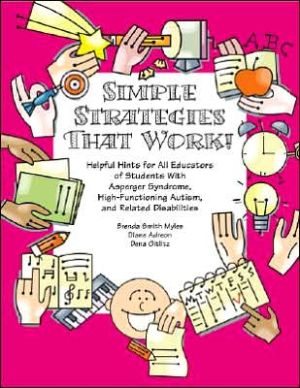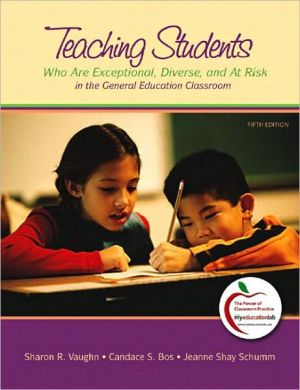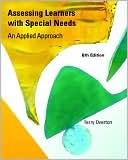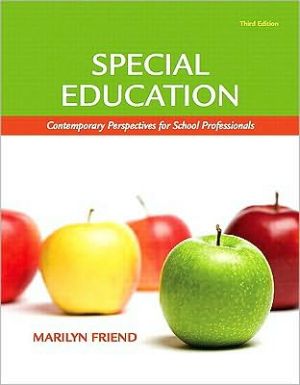Adapted Physical Education and Sport - 5th Edition
Through this latest edition of Adapted Physical Education and Sport, you can provide top-quality physical education for youth with disabilities and help them get the most out of their sport participation.\ This new edition is updated to keep you current with today’s trends in adapted physical education and sport:\ • Major revisions to chapters on measurement and assessment from new contributors, including information about the Brockport Physical Fitness Test and individualized education...
Search in google:
Adapted Physical Education and Sport, Fifth Edition, offers a comprehensive look at providing high-quality physical education and sport experiences for people through age 21 with disabilities. Readers learn best practices and applications for inclusion and discover how to develop individualized education programs. The text comes with a DVD and has a companion Web site with an instructor guide, test bank, and PowerPoint presentations.
Part I: Foundational Topics in Adapted Physical Education and SportChapter 1. Introduction to Adapted Physical Education and SportJoseph P. WinnickMeaning of Adapted Physical EducationAdapted SportPlanning: Purposes, Aims, Goals, and ObjectivesService ProvidersBrief History of Adapted Physical EducationInclusion MovementLitigationLaws Important to Adapted Physical Education and SportHistory of Adapted SportPeriodicalsOrganizationsSummaryReferencesChapter 2. Program Organization and ManagementJoseph P. WinnickProgram and Curriculum PlanningAdministrative Areas Related to Program Organization and ManagementHuman ResourcesGeneral Program EvaluationSummaryReferencesChapter 3. Adapted SportMichael J. PaciorekIntegration ContinuumAdapted Interscholastic Model for SportsSport OrganizationsOlympic and Amateur Sports Act and USOCU.S. ParalympicsRole of National and International Governing BodiesParalympic GamesClassificationSchool and Community-Based Adapted Sport ProgrammingRegular Sport ParticipationTransition ServicesRole of the Physical Educator in Adapted SportWhat About Jeffrey Kling’s Case?SummaryReferencesChapter 4. Measurement, Assessment, and Program EvaluationManny Felix and Garth TymesonTerminologyStandards for AssessmentTesting and Assessment in Adapted Physical EducationTest Instruments Used in Adapted Physical EducationProgram EvaluationSummaryReferencesChapter 5. Individualized Education ProgramsManny Felix and Garth TymesonOverview of Individualized ProgramsStudents With Disabilities: The IEP DocumentComponents of the IEPDevelopment of the IEPSection 504 and the Accommodation PlanStudents Without Disabilities Who Have Unique NeedsSummaryReferencesChapter 6. Behavior ManagementE. Michael LoovisApplied Behavior AnalysisTypes of ReinforcersSchedules of ReinforcementProcedures for Increasing BehaviorProcedures for Decreasing BehaviorUses of Applied Behavior Analysis in Physical Education and SportOther ApproachesSummaryReferencesChapter 7. Instructional Strategies for Adapted Physical EducationDouglas H. CollierPhilosophical Approaches to Adapted Physical Education and SportSystematic Teaching: How to Facilitate Motor LearningMeeting Individual DifferencesCurricular Options: What to Teach?Activity ModificationsTeaching StyleClass FormatDiscrete Trial TeachingTask AnalysisUsing Support ServicesPrescriptive Planning and Instructional ModelsSummaryReferencesPart II: Individuals With Unique NeedsChapter 8. Intellectual DisabilitiesPatricia L. FeganDefinition, Classification, and IncidenceCauses of Intellectual DisabilitiesCognitive DevelopmentCharacteristics of People With Intellectual DisabilitiesDown SyndromeAssessmentOrganizational MethodsInstructional MethodsActivitiesStrategies for InclusionSpecial OlympicsParalympic Games for People With Intellectual DisabilitiesSafe ParticipationSummaryReferencesChapter 9. Behavioral DisordersE. Michael LoovisNature of Emotional and Behavioral DisordersCauses of Behavioral DisordersGeneral Implications for Physical Education and SportSpecific Approaches for Physical Education and SportPositive Behavioral Interventions and Support SystemsInclusionSummaryReferencesChapter 10. Autism Spectrum DisordersCathy Houston-WilsonHistory of Autism and Asperger SyndromeAutism Spectrum DisordersEtiologyIncidencePhysical and Motor CharacteristicsGeneral Educational ApproachesImplications for Physical EducationApplied Behavior AnalysisInclusionSummaryReferencesChapter 11. Specific Learning DisabilitiesBarry W. LavayWhat Is a Specific Learning Disability?Behaviors Present Unique ChallengesGeneral Educational ApproachesRecommendations for Teaching Physical Education and SportSummaryReferencesChapter 12. Visual ImpairmentsLauren J. LiebermanDefinition of Visual ImpairmentCauses of Vision LossCharacteristics of People With Visual ImpairmentsTeaching Students With Visual Impairments in Inclusive Physical EducationSports for Athletes With Visual ImpairmentsSummaryReferencesChapter 13. Hard of Hearing, Deaf, or DeafblindLauren J. LiebermanDefinitions of Hearing LossTypes and Causes of Hearing LossCharacteristics of Students With Hearing LossGeneral Considerations for Teaching Physical Education to Students With Hearing LossTeaching Considerations for Students With Cochlear ImplantsInclusion Strategies for Teaching Students With Hearing LossDeafblindnessSport OpportunitiesSummaryReferencesChapter 14. Cerebral Palsy, Traumatic Brain Injury, and StrokeDavid L. PorrettaCerebral PalsyTraumatic Brain InjuryStrokeProgram ImplicationsInclusionAdapted SportSummaryReferencesChapter 15. Amputations, Dwarfism, and Les AutresDavid L. PorrettaAmputationsDwarfismLes AutresProgram ImplicationsInclusionAdapted SportSummaryReferencesChapter 16. Spinal Cord DisabilitiesLuke E. KellyClassificationsSpinal Cord InjuriesSpinal Column DeviationsImplications for Physical EducationInclusionOrthotic DevicesAdapted Sport ActivitiesSummaryReferencesChapter 17. Other Health-Impaired ConditionsFrancis M. KozubDiabetes MellitusSeizure DisordersAsthmaCancerCardiovascular DisordersAnemiaHIV and AIDSTourette SyndromeInclusionSummaryReferencesChapter 18. Students With Temporary Disabilities and Other Special ConditionsChristine B. StopkaActivity Injuries and Rehabilitative ExercisesLong-Term Disorders and Suggested Adapted Physical Activities to Improve ThemSummaryReferencesPart III: Developmental ConsiderationsChapter 19. Motor DevelopmentJohn C. Ozmun and David L. GallahueMotor Development DefinedCategories of MovementMotor Development as a Dynamic SystemPhases of Motor DevelopmentSummaryReferencesChapter 20. Perceptual–Motor DevelopmentBarry W. Lavay and Joseph P. WinnickOverview of the Perceptual–Motor ProcessSensory SystemsSummaryReferencesChapter 21. Infants and ToddlersCathy Houston-WilsonLegislationTeachers of Early Childhood Adapted Physical EducationAssessmentGoals and Objectives of Motor Programs for Infants and ToddlersGoals and Objectives of Motor Programs for Infants and Toddlers With Unique NeedsDevelopmentally Appropriate Interactions With Infants and ToddlersInteracting With FamiliesSummaryReferencesChapter 22. Early Childhood Adapted Physical EducationLauriece L. ZittelIdentifying Young Children With Developmental DelaysAssessment of PerformanceEarly Childhood Program Standards and Learning ObjectivesPlanning for InstructionDevelopmentally Appropriate Teaching ApproachesActivitiesSummaryReferencesPart IV: Activities for Individuals With Unique NeedsChapter 23. Health-Related Physical Fitness and Physical ActivityFrancis X. ShortDefinitionsPhysical Fitness and HealthPhysical Activity and Health-Related Physical FitnessPhysical Activity and HealthSummaryReferencesChapter 24. Rhythmic Movement and DanceBoni B. BoswellTeaching Dance: What Is It?Teaching Dance: What Is It Not?Selection of Age-Appropriate ContentRhythmic MovementsCreative Educational DanceStructured DanceSummaryReferencesChapter 25. AquaticsMonica LeporeBenefits of Adapted AquaticsGeneral Teaching SuggestionsAquatic AssessmentAdapting Swimming SkillsOrientation to WaterFacility and Equipment ConsiderationsMeeting Participants’ Unique NeedsSwimming as a Competitive SportOther Aquatic ActivitiesInclusion in Aquatic ActivitiesSummaryReferencesChapter 26. Team SportsDavid L. PorrettaGetting InvolvedBasketballFloor HockeyFootballSoccerSoftballVolleyballGoalballQuad RugbyInclusionSummaryReferencesChapter 27. Individual, Dual, and Adventure Sports and ActivitiesE. Michael LoovisTennisTable TennisAnglingArcheryBadmintonBowlingFencingHorseback RidingGymnasticsWrestling and JudoTrack and FieldGolfPowerliftingCyclingBocciaAdventure ActivitiesInclusionSummaryReferencesChapter 28. Winter Sport ActivitiesLuke E. KellyValue of Winter SportAlpine SkiingSnowboardingCross-Country SkiingCompetitive Skiing for People With DisabilitiesIce SkatingSledding and TobogganingHockeyCurlingInclusionSummaryReferencesChapter 29. Enhancing Wheelchair Sport PerformanceAbu B. YillaAthlete and Wheelchair: A Systems ApproachCombining the Athlete and the WheelchairIntroducing Juniors to Wheelchair SportFuture DirectionsSummaryReferences
